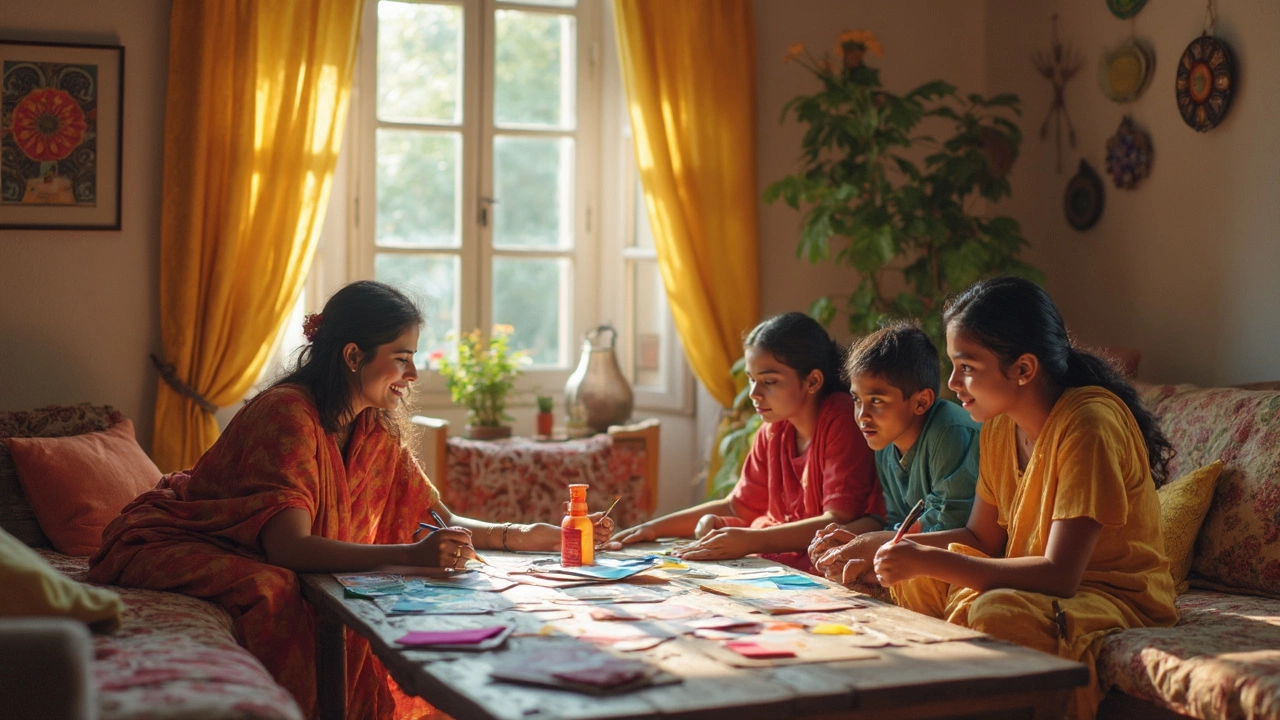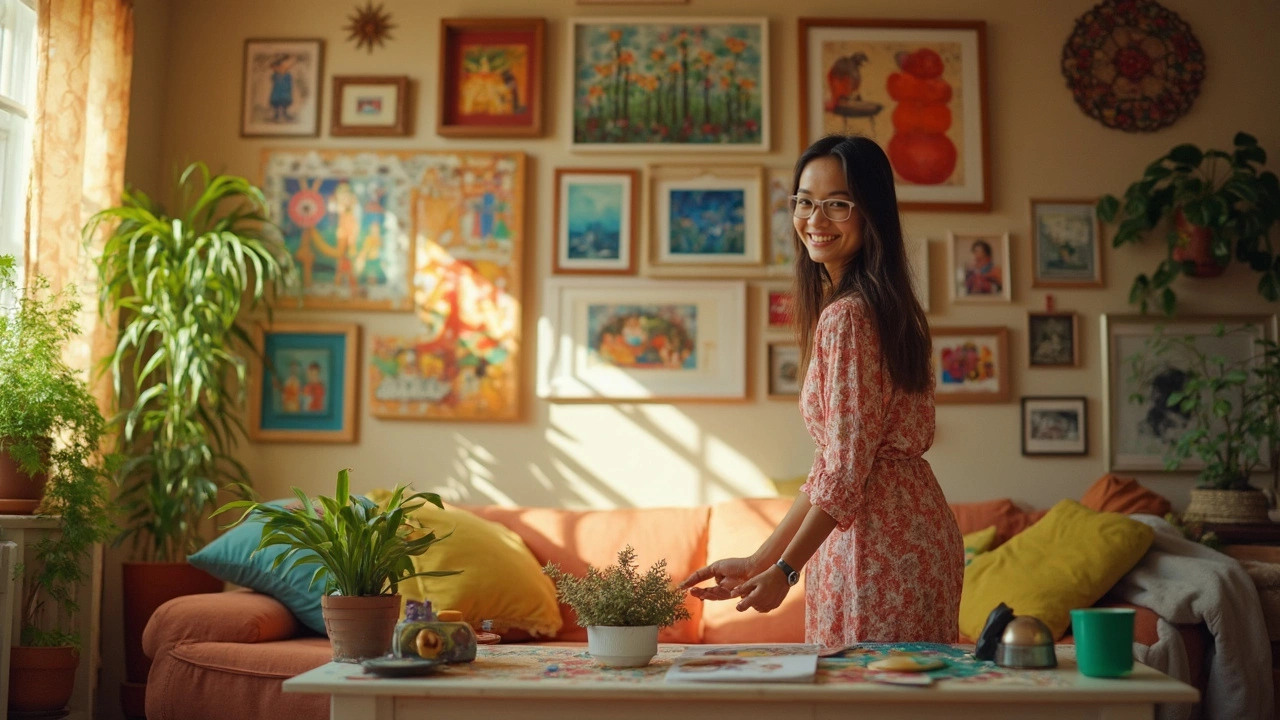Can You Do Interior Design Yourself? Smart Tips and Realities

Scrolling through Pinterest makes DIY interior design look like a breeze, right? But once you’re staring at four blank walls and a pile of half-built flat-pack furniture, it suddenly feels like a much bigger challenge. Here’s the thing—most people can totally design their own spaces. But there’s a gap between pinning ideas and actually living in a room that feels good every day.
If you’re wondering where on earth to start, you’re definitely not alone. One smart move? Stop shopping and start measuring. Most people skip this part and end up with sofas that don’t fit, curtains that look off, or a living room you can hardly walk through. Seriously, a tape measure is your best friend here.
Don’t sweat if you’re not a “creative type.” Most of interior design is solving real, everyday problems—like awkward corners or not enough light. You don’t have to draw or know fancy color theory. You do need to ask, “What’s not working in this room?” and get a bit curious about fixing it.
- The Realities of DIY Interior Design
- Skills You Actually Need (and Don’t)
- Finding Your Style Without Getting Overwhelmed
- Common Pitfalls and How to Dodge Them
- DIY Tricks Pros Actually Use
- When to Call in the Experts
The Realities of DIY Interior Design
The good news: you do not need a design degree to make your place look and feel like home. But let’s be real—doing your own interior design comes with some tough surprises. It’s not just about picking pretty stuff; you have to balance budget, function, and what you actually like (not just what’s trending).
The first thing people notice is how quickly costs add up. According to a 2024 homeowner survey by Houzz, folks doing full DIY room makeovers usually end up spending about 22% more than they planned. Why? Returning furniture, fixing mistakes, and getting sucked into upgrades you didn’t expect. Here’s a quick breakdown of what DIYers usually spend:
| Room | Average DIY Budget (USD) | Most Common Overrun |
|---|---|---|
| Bedroom | $2,100 | Decor and lighting |
| Living Room | $2,800 | Sofas, rugs, delivery fees |
| Home Office | $1,300 | Upgrading chairs, shelving |
Another reality: you have to make a ton of decisions, and decision fatigue is real. Most DIYers admit they start strong but can burn out after choosing paint, furniture, and fabrics—they just want to be done.
You’ll also run into weird surprises, like realizing your favorite color in the store looks totally different at home, or the new lamp doesn’t work with your old outlets. Loads of newbies discover that it’s the measuring (and remeasuring) that saves the most headaches. Ignore that, and suddenly your dream sofa blocks the closet or your new shelves don’t fit your stuff.
What do most successful DIYers have in common? They’re willing to learn, ask for help, and admit when they’ve messed up. If you can do those three things, you’re already set up better than half the people who quit after week one.
- Be honest about your time and budget—track both from the start.
- Take before photos for inspiration and motivation down the line.
- Don’t try to finish a whole room in one weekend unless you love feeling stressed.
Bottom line: it’s totally doable to design your own space, but there’s more to it than most people expect. If you’re ready for some hands-on trial and error (and a bit of patience), you’ll get a space that’s way more personal than anything a pro could create from scratch.
Skills You Actually Need (and Don’t)
This might surprise you, but most pro designers don’t have superhuman talents. You won’t need a college degree in design to fix your space—great news for anyone just starting out. Here’s what actually goes into nailing your own interior design:
- Measuring accurately: Grab a tape measure and jot down the length, width, and height of your room, plus the doors and windows. Skipping this step is a classic rookie mistake.
- Basic planning: Sketch out a simple floor plan or use free apps like Roomstyler or the IKEA planner. You can avoid buying stuff that won’t fit.
- Color and lighting sense: You don’t have to know fancy color theory. But spend a minute in the room at different times of day. Notice what colors work in natural light versus lamp light.
- Budgeting and prioritizing: Decide early what matters most, so you won’t blow your whole budget on trendy throws and end up sitting on a broken chair.
Most people think you need to be able to draw, but honestly, a smartphone camera and a notepad work just as well. Don’t stress about drawing straight lines or creating mood boards that look like they belong in a magazine.
Here’s a breakdown showing what skills people think are important (but actually aren’t), and what’s really needed for a successful DIY interior design project:
| Overrated Skills | Actually Useful Skills |
|---|---|
| Perfect drawing or sketching | Basic measuring and planning |
| Fancy art background | Knowing personal needs and likes |
| Copying trends exactly | Adapting ideas to real life spaces |
| Buying expensive décor | Smart shopping and budgeting |
If you’re handy with a drill or paintbrush, awesome—that’s just a bonus. But most DIYers learn one skill at a time. YouTube is a lifesaver for learning the basics, from hanging shelves to painting stripes. Don’t be afraid to start small.
Finding Your Style Without Getting Overwhelmed
So many people get stuck here. You want your place to feel like you, but every guide, Instagram account, and shop seems to push a different vibe. The truth? There’s actually no rulebook you have to follow. You can mix what you like—what matters is that you don’t drown in options.
The best way to figure out your style is to narrow focus and gather real-world inspiration. Spend a week taking photos of rooms, restaurants, or random corners you actually enjoy being in. Look at what colors, furniture shapes, or patterns those places have in common. Every major designer I’ve worked with swears by mood boards, and there’s a reason: seeing your ideas in one place makes it much less confusing.
- Don’t save every pretty thing you see online. Stick to your top 10 images or ideas. Less is easier to manage.
- Visit stores in person when you can. Photos rarely show you how a sofa really feels, or how big a lamp is in real life.
- Think function first. For example, you might love Scandinavian white walls, but if you’ve got kids and a muddy dog, they’ll be dirt central fast.
Here’s a quick breakdown of the most popular interior design styles today, and where you’ll usually spot them:
| Style Name | Main Features | Perfect For |
|---|---|---|
| Modern | Clean lines, neutral colors, no clutter | Apartments, open-plan homes |
| Boho | Lots of textures, earthy colors, handmade stuff | Creative types, renters |
| Scandinavian | White, pale wood, minimalist vibe | Family homes, smaller spaces |
| Mid-Century Modern | Retro shapes, tapered legs, bold art | Lofts, stylish living rooms |
One more tip: don’t feel pressured to rush into big decisions. Ever notice those staged rooms in catalogs look full but actually use way less stuff? There’s a reason—most people fill their rooms too fast and regret it. Build your space slowly and swap things as you figure out what actually feels right.

Common Pitfalls and How to Dodge Them
Trying to handle your own interior design can feel great—until a few classic mistakes show up. Let’s talk about the most common ones and what you can actually do to avoid them. These trip up almost everyone, whether you’re decorating your first apartment or your forever home.
One of the top issues is skipping the planning stage. People rush into buying furniture or paint and end up with a jumble of styles and colors. It’s way easier (and cheaper) to slow down and sketch a rough floor plan, measure your space, and decide the vibe you want before you buy a single thing.
- Choosing Paint First: The color on your walls completely changes based on lighting and what’s in the room. Pro tip: pick bigger pieces—like your sofa or rug—before settling on paint. Try out swatches in different spots around the room for at least a few days.
- Buying Everything at Once: Filling your cart with matchy-matchy sets looks easy, but the result just feels flat. Bring things in slowly, collect items you actually like, and live with your space for a bit.
- Ignoring Lighting: According to a 2023 Houzz survey, about 60% of homeowners regret not adding enough light sources. Layer your lighting—mix overhead lights, floor lamps, and even fairy lights if you’re feeling playful. Each adds mood and makes your room usable at all hours.
- Hugging Walls: People love pushing all their furniture against the walls, thinking it’ll make the room look bigger. Often, bringing sofas or chairs a few inches in can actually help the space “breathe” and feel cozier.
- Neglecting Function: That cool chair might look great, but if it’s uncomfortable, nobody’s going to use it. Ask: Does this actually work for how we live?
Check out this quick stat breakdown—these are mistakes people admit to making most often:
| Pitfall | % of DIYers Who Regret It |
|---|---|
| Wrong Furniture Size | 54% |
| Poor Lighting Choices | 61% |
| Bad Color Choices | 46% |
| Not Testing Paint | 38% |
| Decor Overload | 42% |
The key to dodging these? Don’t rush, measure everything, and edit as you go. Good design is less about copying trends and more about making your place work for you. Take photos of your space at each stage—sometimes, you spot things in a photo that you miss in real life. And remember, nothing’s permanent. It’s just paint, furniture, and a few screws—if something really doesn’t work, you can always tweak it.
DIY Tricks Pros Actually Use
Ever wondered how real designers make a place feel just right? It turns out, a lot of the coolest tricks aren’t top secret or super expensive. It’s all about using basic rules and not skipping steps that seem boring. Here’s what the pros do that you can steal for your own space:
- Test Paint First: Pros always sample paint on the actual wall, not just a chip at the store. Light changes everything. Grab sample pots and brush big swatches. Look at them day and night before you pick.
- Measure Everything: Before you buy anything, measure your room, old pieces you want to keep, even the doorways. Designers carry a measuring tape in their bag for a reason—returns are a headache.
- Plan Layout with Tape: Instead of moving heavy furniture around a hundred times, lay down painter’s tape where big items will go. It’s way easier to see if a sofa will block a walkway or a bed eats up too much room.
- Layer Lighting: The pros nearly never use just one lamp. They mix overhead lights, floor lamps, and table lamps to cover every mood. This makes even cheap decor look higher-end.
- Mix High and Low: You don’t need all designer stuff. Splurge on things you touch every day (like a couch), then go budget on side tables, shelves, throws. Nobody notices the difference unless you tell them.
Curious what makes the biggest difference? Check out this quick table showing pro advice versus what most DIYers actually do:
| Pro Tip | Most DIYers |
|---|---|
| Test full samples on walls | Pick from a tiny chip |
| Use at least 3 types of lighting | Stick with a single ceiling light |
| Space out furniture for flow | Push everything against walls |
| Mix old and new pieces for personality | Buy matching sets from one shop |
If there’s one interior design move you copy from the pros, start with layering your lights and taking your time with choices. Ask yourself if a room feels cozy and easy to use—not just if it looks good in photos. Little changes add up quicker than you think.
When to Call in the Experts
So you’ve tried your hand at interior design, but something’s off. Maybe the layout just isn’t working, or the paint you picked looks totally different on the wall. There’s no shame in getting some professional help—sometimes it actually saves you time, cash, and a ton of headaches.
If you’re moving walls, messing with electrical systems, or adding custom built-ins, that’s solidly expert territory. Licensed pros keep things safe and up to code, and your house insurance might even require it. Even with genius DIY skills, the average person won’t know the local rules or the tricks for hiding ugly wiring in a clean way.
Money becomes a big deal here too. Research from Houzz in 2024 showed that homeowners who got pro input on anything structural or custom ended up spending about 15% less on expensive, fixable mistakes. That’s not just wasted paint or pillows—that’s thousands on floors, lighting plans, and furniture that fits.
| When to DIY | When to Hire an Expert |
|---|---|
| Paint a room | Move/add walls |
| Pick furniture | Rewire electrical |
| Hang art and shelves | Plumbing work |
| Declutter and organize | Custom cabinetry |
Even for style stuff, pro advice can unlock ideas you didn’t know existed. Designers often get access to products and solutions that aren’t on the usual retail shelves. Plus, if you’re splitting hairs on style, pros act as mediators—no more fighting about sofa colors with your partner.
A good rule: If you’re feeling stuck, overwhelmed, or facing a decision that could cost big money, that’s a great time to at least book an expert consult. Many designers now offer affordable hourly sessions—sometimes just one call saves a whole remodel. Think of it as insurance for your dream space.


